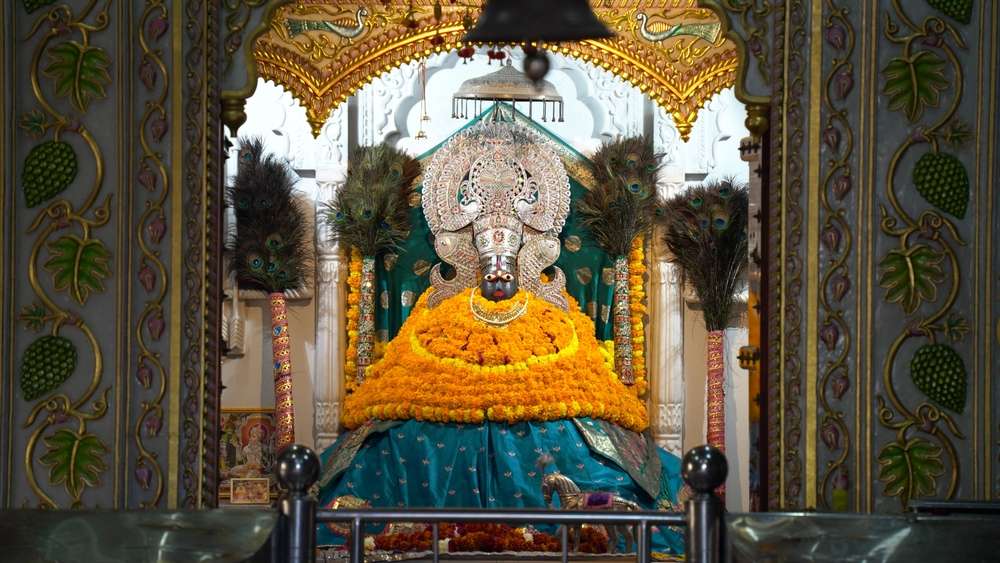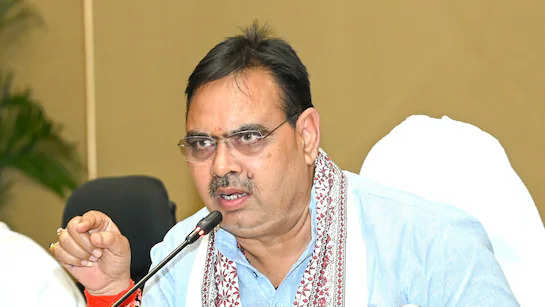Kota : The famous Dole Fair has started in Baran district of Rajasthan from 14th September. The Municipal Council and the administration have taken the responsibility of providing grandeur to this fair which is held for a fortnight. Every year people from all over Rajasthan and the neighbouring state of Madhya Pradesh come to attend this fair. On Jaljhulani Gyaras, this fair begins with the procession of the deities seated in various temples of the city.
The fair is being organized every year since 1680
Senior historian Gajendra Singh Yadav tells that the Dola fair and yatra in Baran started in 1680 in the form of a market on the banks of the Banganga river during the time of Bundi Keshavbhav Singh Hada. At that time Baran i.e. Varah Nagari was in the estate of Hadi Rani. At that time it was the time of the Mughal ruler Aurangzeb, who was a staunch opponent of Hindu culture. While coming and going from Delhi to Malwa, he used to visit Baran, Vilas, Shahabad, Atru and Chandravati.
A mosque was built near the temple
It should be known that Rao Srijan Hada handed over the temple to Akbar in 1569 under a treaty made between Ranthambore Fort State and Hindu side. Then one of the two idols of Lord Vishnu was installed by Rajmata Grihalotni ji in the Shreeji (Kalyan Rai ji) temple built in Baran during the time of his grandson Rao Ratan. Later, i.e. 100 years after the construction of the temple, in 1680, Hada Rani built a mosque nearby to save the temple from the terror of Aurangzeb, due to which the temple was not visible. Then Bhav Singh being religious, he put the temporary idol in a wooden palanquin for Jalwa Pooja and walked with the Shreeraj family on foot and got the forest walk done with armed royal honour. Since then this tradition has been going on at a detailed level. This is the first Dola fair in the country, its history and entry is in the government gazetteer.
Efforts to preserve religious history
Kota’s Dussehra, Baran’s Dole Fair, Bundi’s Teej, Jhalawar’s Kartik Fair. At that time, Kota state included the present Kota, Bundi, Baran, Jhalawar districts. This state was unified in 1764 during the time of Kota Darbar Ummed Singh II. Since then, the Bundi king fell ill and then died. After that, Bundi state also came under the rulers of Kota. Then a meeting was held and a decision was taken, in which the advisors and rulers under the leadership of Jalim Jhala Singh discussed how to maintain the religious history. The decision was to start Dole Fair on Jaljhulani Ekadashi in Baran, Dussehra Fair on Vijayadashami in Kota, Teej in Bundi and Kartik Fairs on Kartik Purnima in Jhalawar. Since then, people have been celebrating them as folk festivals. These four fairs come at an interval of three-four months.
The 3 day fair now lasts for 18 days
Then it started as a market. There were no roads, streets, electricity then. People used to come from far off places in bullock carts and used to stay here for two, three days to enjoy the fair. Slowly the time changed. The country, state and Baran moved towards development. Now every home has electricity. Slowly the fair progressed in the last 50 years. The fair increased from three days to 7 days, then 10 days, then 15 days and now it has become 18 days. For 18 days, folk cultural programs are organized on the stage of the fair every day. Many types of programs continue for 18 days. The people here have been connected to the fair since then. Apart from Rajasthan, people from other states also come to the fair to do business and enjoy the fair. For the first time in this fair, a shop from Delhi came.
The procession of Dev Vimaans is the attraction of the fair
Though the fair has its own attraction, but the attraction of the Dola fair of Baran is the procession of Dev Vimaans (Dol) from the temples of various castes in the entire city with drums and musical instruments. To see and witness this procession, there is a huge crowd of lakhs of men, women, children and youngsters. Before the procession of Vimaans, there are Bhajan Kirtan groups and after that, the visitors are left awestruck by the unique and astonishing feats of wrestling and physical skills of thousands of young men and wrestlers. It is said that this tradition of showing the feats of the wrestling started with the Dola fair.
existing
There are many beliefs about the Dola Shobha Yatra. It is said that on this day Lord Shrivigraha goes out to roam around sitting in his Vimaan i.e. Dola. Secondly, on this day, Shri Krishna’s mother leaves the house with music and drums to worship the Sun and Jalwa on the 18th day of Krishna’s birth. Some believe that the Lord seated in various temples goes out to admire the splendor and beauty of the greenery of nature.
Shreeji and Raghunathji embrace each other
Traditions change with time. But this was not proved true with Baran. The age-old tradition is still in place. The procession of vimanas starts from Shri Kalyanrai, Shreeji Temple. The vimana of Raghunath Temple is also in the front. This temple is called Rajmandir. This vimana stops outside the temple, where the vimanas of Shreeji and Raghunath Ji embrace each other. This tradition is still alive. Thousands of people rush to see this scene and feel blessed after getting darshan.
In a crowd of thousands, the path starts forming on its own
During the Dole Shobha Yatra, a large number of people gather in the markets of Baran city and on the roofs of houses and shops to see the Shobha Yatra. There is not even an inch of space in the markets. There is always a lot of jostling and crowd. The elders say that when the Vimanas of Shriji and Raghunathji embrace each other, the way is automatically cleared when the Vimanas of Raghunath temple move ahead. People consider this to be God’s grace. Then the Vimanas of other temples move behind in a queue. The meaningless feeling of high and low is not reflected in anyone’s mind during the Shobha Yatra. Along with different castes, there is also an Akhara and Vimana of the Valmiki (Harijan) community.
Collective Jalwa Puja with sound of conch and bell
This procession of aircrafts reaches the pond at Dole Mela in the evening, on the banks of which these aircrafts are kept. Where the deities are given fresh water to rest. After that, a collective Mahaarati is performed with the sound of many musical instruments like Shankhnath, Ghanta, Dhwani, Jhalaar etc. and shouts of Jai-Jaikaar. This scene is also very attractive, people become emotional with reverence. Seeing this luminous scene reminds one of the Ganga Aarti of Haridwar. This Dole Mela of Baran, a mixed form of religious reverence, folk entertainment and business, has earned a lot of fame.
This is the history of the fair
Kalyanraiji, Shreeji’s temple located in Baran from where the procession starts. It is said to be 600-800 years old. It is mentioned in history that Maharao Surjan Hada of Bundi handed over the Ranthambore fort to Akbar. At that time 02 idols of gods were brought from there. One of them was of Ranganathji and the other was of Kalyanraiji. The idol of Ranganathji was installed in Bundi and the idol of Kalyanraiji was brought to Baran. The then queen of Bundi got the temple of Shreeji built here and installed the idol here.


